-
What is OnToology?
A system to automate part of the collaborative ontology development process. Given a repository with an owl file, OnToology will survey it and produce diagrams, a complete documentation and validation based on common pitfalls. OnToology also creates an issue in GitHub with an evaluation summary. Once you register your repository, OnToology will track your ontologies (in the registered repository) for changes. Whenever a change in an ontology is pushed, OnToology will generate documentation, diagrams and evaluation report for the changed ontologies. After that, OnToology will create a pull request with the generated files. You can enable/disable documentation, visualization or/and evaluation via a configuration file.
-
How to use OnToology?
Create a repository on GitHub with your ontologies. Add your repository to OnToology (e.g. user/reponame), and wait for OnToology to process it out (usually, within seconds) A pull request with documentation, diagrams, evaluation report, and JSON-LD context will be generated automatically, and you will be notified of the progress on the OnToology site. See the Step by Step page for more info.
-
What is the supported the files folders and files names?
English alphabets, underscores, dashes, and dots. Other alphabets and characters are not currently supported.
-
What are the web browsers supported by OnToology?
We tested OnToology with: Chrome, Opera, Firefox, and Safari.
-
What is the status of my repository?
You can see the current status of any of your repositories in the runs page .
-
How to check the status of the last operation?
You can access the status of the last action occured under your account related to any repository in the status page.
-
Why can't I see my ontology documentation when I open the index file locally?
Your documentation is separated in different files, which are then loaded in your browser. However, Chrome and Firefox disable ajax on local html files by default, and hence the documentation cannot be browsed locally. If you publish your ontology using OnToology you will be able to see it properly.
-
My questions are unanswered by this page. Who can I ask?
You can contact us by email: ontoology (at) delicias.dia.fi.upm.es .
-
How is the community adopting OnToology?
Since the release of the tool, OnToology has been adopted by many projects (more than 700 repositories containing more than 500 ontologies). It has been used for ontologies in wide range of domains (e.g. energy, e-science, building, environment, smart cities, etc.).
-
Ontology publication is stuck, what can I do?
This is most probably an access-related issue. You have to make sure that you authorized OnToology and that you have OnToologyUser as a collaborator (see the screenshots below). If this is not the case, try to add the same repo again. Also you have to enable GitHub Pages. It should be the
gh-pagesbranch. If this doesn't work, send us an email and we will make sure that your issue is resolved.
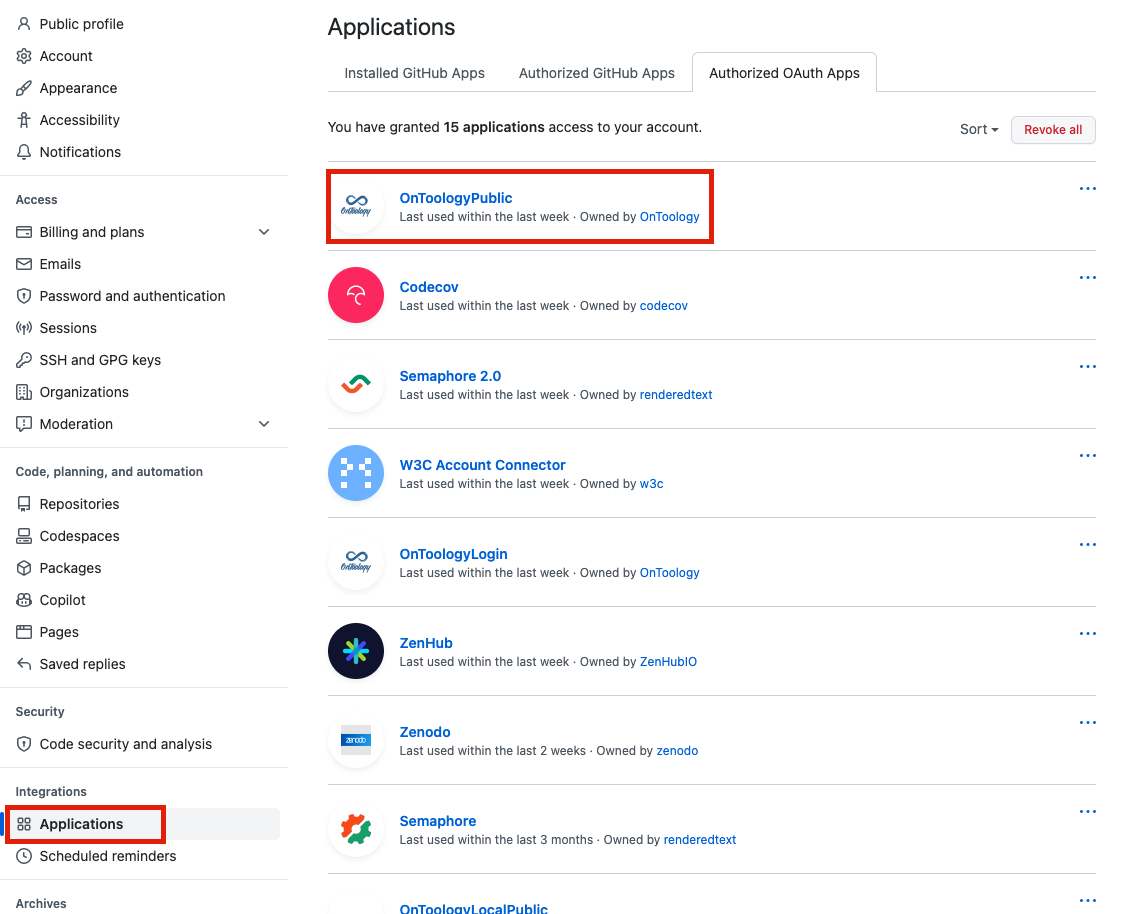

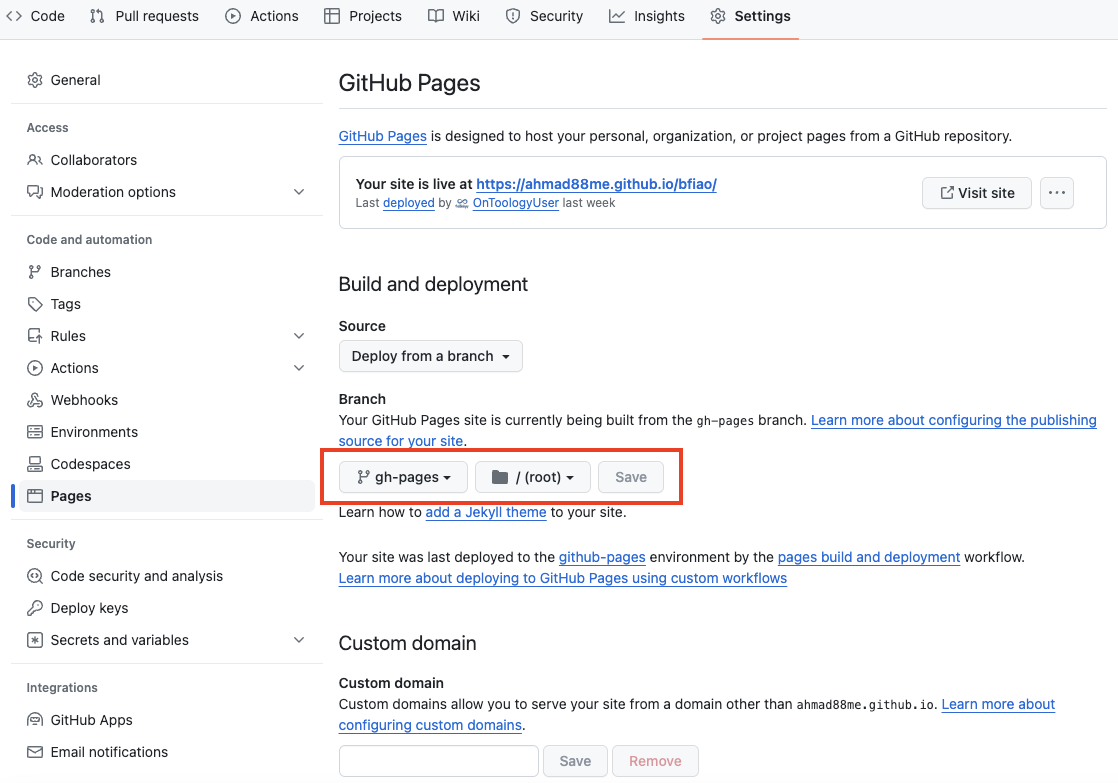
-
What does OnToology generate?
Once you push changes to GitHub, OnToology will perform the following actions for each changed ontology
- Generate documentation into HTML using Widoco.
- Generate diagrams using AR2DTool.
It will generate two kinds
of diagrams:
- Class diagram.
- Taxonomy diagram.
- Generate an evaluation report using OOPS!
- Generate JSON-LD Context using owl2jsonld.
- Generate a landing page for a chosen repository (previsualization) with all ontologies in that repository
- Create a downloadable bundle with the generated resources in case users want to host ontologies by themselves
- Publish an ontology with permanent id (w3id.org) hosted on our server with redirection
Configuration file
A configuration file per ontology (since a repository can has multiple ontologies) is used to enable/disable the generation of documentation, diagrams and/or evaluation. The configuration file has three sections, "widoco", "ar2dtool" and "oops", for documentation, diagrams and evaluation, respectively. Each of the sections has a key called "enable" and can has the values "true" or "false". Configuration files will be created automatically if they do not exist.

A sample configuration file
Sequence Diagram
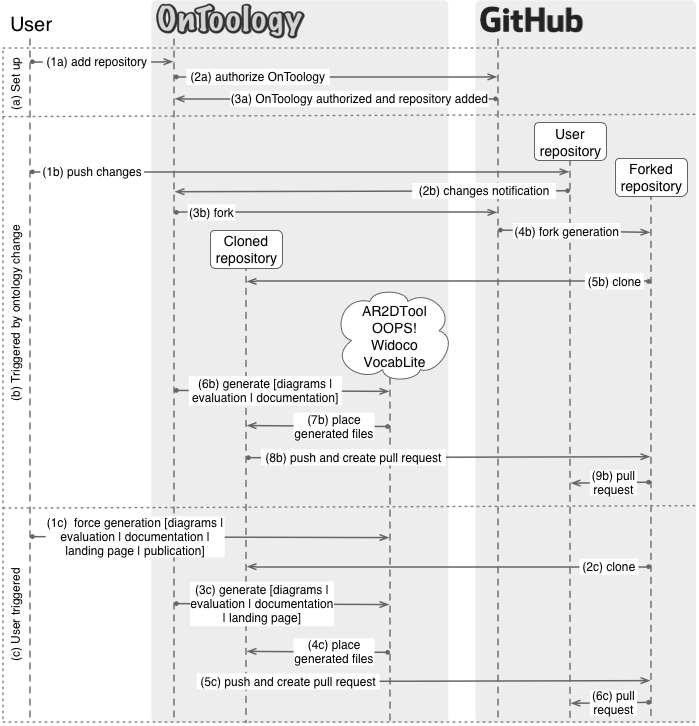
Output Structure
OnToology will create a folder named "OnToology" in the top level. Inside this folder, in will create the same structure of the repository. Inside the folder that is named after ontology file, there will be three folders, "documentation", "diagrams" and "evaluation". There will be configuration file "OnToology.cfg" beside these folders.
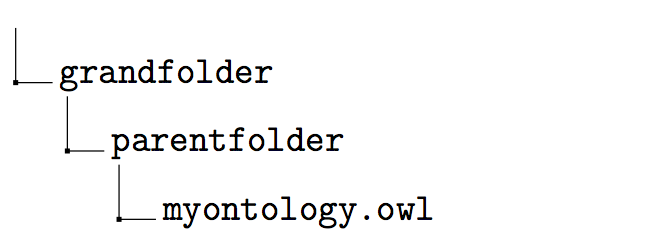
An example of a repository before OnToology is triggered
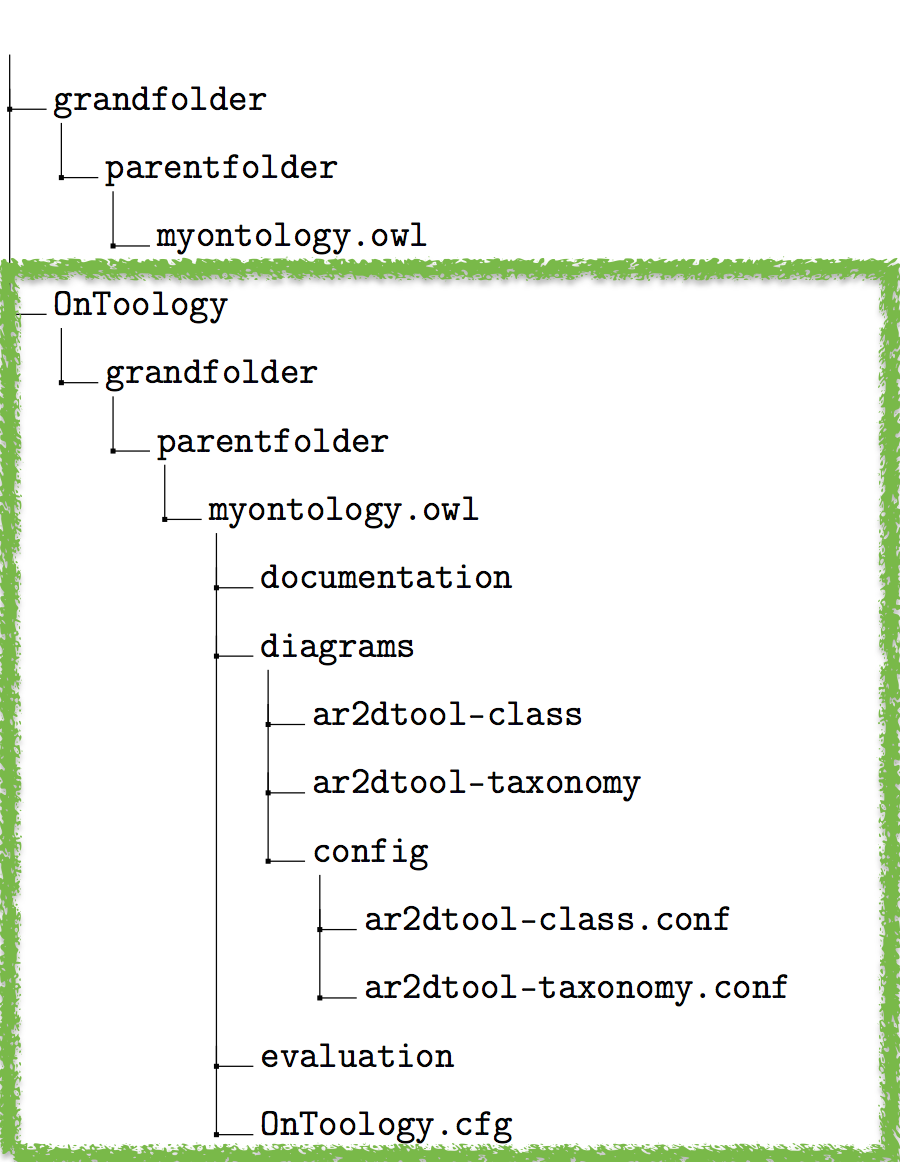
After OnToology is triggered
Permission and Security
OnToology will ask permission to access added user repository. OnToology will only ask permission to access public repositories. If you need to use OnToology for your private repository, you can contact us via email (see the footer below).
Limitations
- OnToology does not support OWL functional-style syntax
- OnToology does not support repositories under a Github organization
- Private repositories are not currently supported
- OnToology relies on the OOPS! webservice. Hence, hiccups in OOPS! web service may halt successful reports in OnToology.


